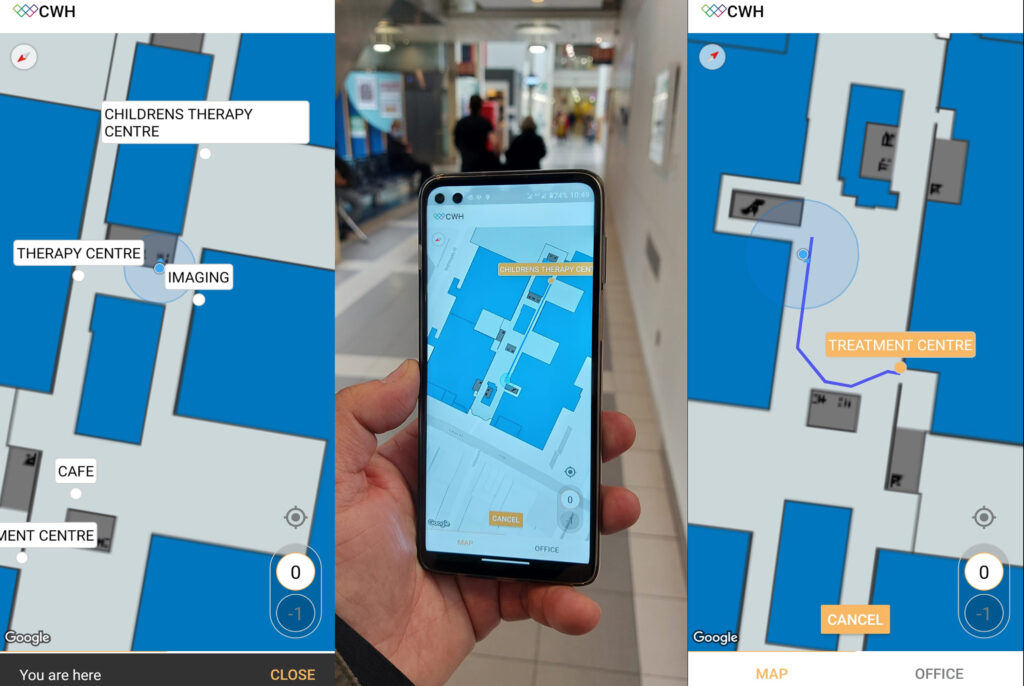How technology is improving hospital visits and treatment

If you are support older relatives or friends, you will inevitably find yourself visiting hospitals, either to see then when they are in-patients or accompanying them to clinics and routine check-ups.
The way that treatments are delivered is changing constantly. And new technology is shaping how we use hospitals.
So what is happening now that will benefit our relatives and ourselves in the future? Here are a few examples.
Reducing risk with artificial intelligence
Healthcare use of artificial intelligence (AI) is expected to grow rapidly.
Examples of ways that AI could reduce and/or mitigate risk include helping to:
- detect high risk patients by identifying those in need of medical intervention and triggering alerts to medical staff
- deliver personalised recommended dosages by factoring in the unique body chemistry and associated environmental factors associated with individual patients.
The UK’s Babylon Health has a patient-centered remote consultation service that uses deep learning to provide users with personalised insights to help them better understand their health.
Delivering treatment through nanomedicine
Nanomedicine applies the tools of nanotechnology to the treatment and prevention of illness. It involves the use of nanoscale materials for the delivery of therapeutics (including vaccines), biomarker discovery, bioimaging and for the treatment of neurodegenerative diseases.
There are a number of start-ups around the world with interesting projects, including Israel’s Vecoy Nanomedicines, looking to treat viral infections by administering novel nano-scale virus-traps that capture and destroy viruses.
Supporting complex surgery with robotics
Surgical robots are machines that execute surgical tasks. But they are not autonomous. A (human) surgeon performs the surgery using robotic instruments that they guide via a console. Although tiny wristed instruments move like a human hand, they have a much greater range of motion. The small size of the instruments means surgeons can operate through one (or a few) small incisions, helping with complicated operations by allowing greater precision and flexibility than traditional techniques.
Globally, da Vinci surgical systems is the oldest and most widely used system in this field.
Finding the way in hospitals
On a very practical level for patients and visitors, technology can help find the best route through a hospital. More than 85% of patients ask for directions when they go to a hospital or other public health facility, and 30% of first-time visitors get lost (Source: Deloitte Digital).
Wayfinding enables patients and other visitors to navigate from outside the hospital all the way to the specific location they need, whether that is a bed on a ward, a consulting room, the café, or the pharmacy.
One example is the BuzzStreets system, already implemented in the Chelsea and Westminster Hospital in London. The BuzzStreets app can plot a route through a hospital, and personlise that route – avoiding stairs, offering the fastest or least busy route, or even giving information about the artwork on the walls of the corridors.
BuzzStreets also includes features such as a communication system between patient and doctor, the possibility of scheduling appointments, receiving medical scans and prescriptions in the app, heat maps, contextual notification, updated and edited locations, appointment reminders, and multilingual voice guidance.
Creating and personalising with 3D printing
Additive manufacturing is where a digital file is used to create physical objects by adding multiple layers – it is more commonly called 3D printing. The origins of the concept are found in the early 1980s and since then more than a dozen methods or technologies have evolved, with examples of 3D printing in medicine (actual and potential) including:
- organ and tissue manufacturing
- personalised medical equipment
- customised implants and prosthetics
- anatomical models for education and surgical planning.
California-based Organovo is one of the leaders in the research and development of 3D bioprinting. The organisation has a goal of 3D printing patches made of human tissue for defunct organs and entire organs for transplantation.
These are just some examples of new technologies that are shaping the future of our hospital. The NHS will be able to use new technologies like these to support their patients, including your older relatives and friends, support their staff and to improve collaboration with its external providers.
Article author Joe Fernandes is founder and CEO of BuzzStreets, an award-winning navigation platform offering wayfinding in hospitals, shopping malls, airports, offices, stadiums and other indoor areas.

